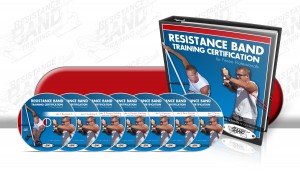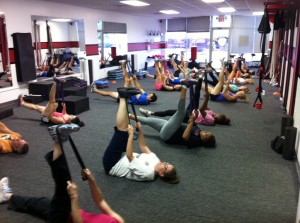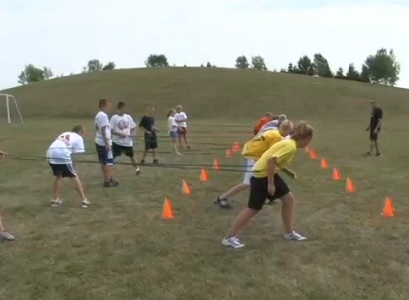How and Why to Build in a Year Round Band Flexibility Program
Athletes young and old do not like to stretch and, as a result, create unnecessary trauma to their joints and muscles by not being optimally ready to perform high intensity ballistic type movements.
Why Athletes Don’t Stretch
Young athletes are not taught why it is important to optimally lengthen out the body prior to performing high intensity ballistic type movements.
Teaching a young athlete at a middle school level why lengthening out their muscles and mobilizing their joints will enhance performance, eliminate unnecessary muscle soreness and help eliminate injury will set a standard that will stay with them as their athletic career advances.
Coaches need to stay consistent and demand that dynamic flexibility training be part of all training workouts. For most athletes, stretching before a big game is well followed.
However, to make a long-term impact on flexibility, athletes need to do it consistently before workouts. Programming this into the workout is the coach’s responsibility.
Research contradicts the importance of stretching before workouts. This contradiction of importance makes it a difficult sell to older athletes and many sport coaches.
The fact is, muscles will not lengthen out and create permanent plastic changes unless they are routinely challenged to do so. Regardless of what research says, muscles that are short will stay short unless they are both lengthened and neuromuscularly taught how to control length.
Traditional body weight stretching is boring. As a result of the prior 3 reasons, a consistent emphasis on making sure muscles are frequently lengthened out prior to working out using a body weight approach has been less than successful over time—especially if athletes are not part of a large team structure.
Why is Resistance Band Stretching Effective?
Elasticity
Being elastic, bands provide for an accommodating resistance so muscles can gradually release into the band tension. This ability to slowly release into the stretch eliminates the inhibition that comes with most body weight stretches.
Ability to Contract
Bands allow the muscles to contract into an accommodating resistance. This ability to contract allows the opposing or antagonistic muscles to relax more effectively which, in turn, allows for better stretching of the targeted muscles.
Lightweight Construction
The band’s lightweight construction allows the stretching extremity to be unweighted. This, in turn, eliminates the influences of gravity which often creates stretch inhibition when doing traditional body weight stretching.
These are more of the physiological reasons why bands are a great flexibility tool. However, there are also some practical reasons that play a significant role in band stretching.
Physicality
The band is an actual tool and for many athletes they need some type of device, ball or equipment to exercise with. The band is a physical tool that provides them with a means for which they can improve their joint mobility.
Simple body weight stretching does not provide a tool that the athletes can use to challenge themselves and, as a result, these types of stretches become boring over a short period of time.
Portability
Bands are very portable so, like body weight stretching, band training can be performed anywhere. This high level of portability allows band flexibility training to be performed on the court, field or weight room as well as on the road during competition.
Varying Resistance Levels
Bands come in various resistance levels so as with strength training, athletes can gradually challenge themselves with greater passive over pressure stretching as their muscle flexibility and joint mobility improves. For a competitive athlete the ability to measure and visually see progress is highly motivating.
How to Implement a Year Round Resistance Band Stretching Program
The most successful way to incorporate a band flexibility program is by starting to implement it prior to every off-season workout regardless if it is a strength-based workout or speed and conditioning-based workout. The initial band stretches should focus on improving the hip complex since this is the true power center of the body.
Over the years of implementing the band flexibility program into numerous athletic teams, the following sequence of band stretches should be followed to make the learning curve as short and efficient as possible.
Stretch 1 – Hamstring Series
Stretch 2 – Hip Rotation
Stretch 3 – Hip Flexor Quadricep
Stretch 4 – Ankle Mobilization
Allow athletes to master the position and integration of an active rhythmical-based stretching approach before progressing onto the next stretch.
A complete band hip flexibility program will require about 4 or 5 training sessions to fully implement. It will require approximately 10 training sessions before sport coaches will see a consistent flow from one stretch to the next.
Another key tip to creating early success with band stretching is allowing athletes to stretch with a band that they can easily control. Stretching with a high resistance band will quickly create muscle inhibition to the stretch and not allow it to optimally lengthen.
Once band stretching has been mastered for the hip and ankle, this sequence of stretches should be used prior to any practice, workout or competitive event.
Best Band Package for Band Flexibility Training
The best band package for band flexibility training is now 15% off using code “rbtiyca15”.
The Medium Single Band Package provides athletes with 4 levels of band resistance. This will allow them to progressively improve their hip and shoulder flexibility by gradually increasing band resistance as their flexibility improves.








